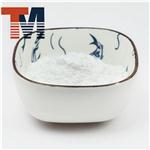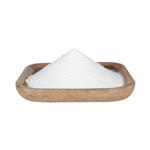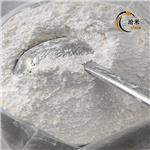Ractopamine
- CAS No.
- 97825-25-7
- Chemical Name:
- Ractopamine
- Synonyms
- el737;RACTOPAMINE;RACTOPAMINE 99%;ractopaMine hydrochl;Ractopamine USP/EP/BP;4-[3-[2-Hydroxy-2-(4-hydroxyphenyl)-ethyl]aminobutyl]phenol;4-(1-hydroxy-2-((4-(4-hydroxyphenyl)butan-2-yl)amino)ethyl)phenol;1-(4-hydroxyphenyl)-2-[3-(4-hydroxyphenyl)-1-methylpropylamino]ethanol;4-Hydroxy-a-[[[3-(4-hydroxyphenyl)-1-methylpropyl]amino]methyl]benzenemethanol;4-Hydroxy-α-[[[3-(4-hydroxyphenyl)-1-methylpropyl]amino]methyl]benzenemethanol
- CBNumber:
- CB2145989
- Molecular Formula:
- C18H23NO3
- Molecular Weight:
- 301.38
- MDL Number:
- MFCD00870322
- MOL File:
- 97825-25-7.mol
- MSDS File:
- SDS
| Melting point | 165-167°C |
|---|---|
| Boiling point | 520.5±50.0 °C(Predicted) |
| Density | 1.189 |
| pka | 9.97±0.26(Predicted) |
| FDA 21 CFR | 556.570; 558.500; 558.4 |
| CAS DataBase Reference | 97825-25-7(CAS DataBase Reference) |
| FDA UNII | 57370OZ3P1 |
Ractopamine price More Price(7)
| Manufacturer | Product number | Product description | CAS number | Packaging | Price | Updated | Buy |
|---|---|---|---|---|---|---|---|
| Usbiological | R0439-06 | Ractopamine | 97825-25-7 | 500ul | $393 | 2021-12-16 | Buy |
| Usbiological | R0439-07 | Ractopamine | 97825-25-7 | 500ul | $393 | 2021-12-16 | Buy |
| American Custom Chemicals Corporation | API0004028 | RACTOPAMINE 95.00% | 97825-25-7 | 1G | $872.6 | 2021-12-16 | Buy |
| American Custom Chemicals Corporation | API0004028 | RACTOPAMINE 95.00% | 97825-25-7 | 5G | $975.45 | 2021-12-16 | Buy |
| DC Chemicals | DC20527 | Ractopamine >98% | 97825-25-7 | 250mg | $400 | 2021-12-16 | Buy |
Ractopamine Chemical Properties,Uses,Production
Introduction
Ractopamine is a ß-adrenergic agonist of phenethylamine group, with structure similar to the catecholamines, epinephrine and norepinephrine, and is an exogenous substance that alters the animal metabolism and distribution of nutrients favoring muscle deposition in relation to fat deposition[1,2]. Most mammals have adipose tissue with ß--receptors, which when activated by catecholamines promote lipolysis and thus reduce body fat. It has been approved for use in swine in 27 countries located in North and South America, and the Asia-Pacific regions[3].
Ractopamine [RAC] is a synthetic β-adrenergic agonist [β-agonist] approved for use in swine in 27 countries located in North and South America, and the Asia-Pacific regions[3]. Ractopamine is marketed under the trade names of Paylean [Elanco Animal Health, Greenfield, IN] and Engain [Zoetis Inc., Kalamazoo, MI]. Ractopamine is fed to improve feed efficiency and carcass leanness with minimal effects on fresh pork quality traits[4,5]. Improvements in feed efficiency can lead to substantial reductions in natural resources used in pork production [6-8]. Sustainable swine production must balance efficient production, food safety, quality and security, environmental stewardship, and swine welfare[9].
Ractopamine [Paylean] has been approved for use in market weight swine [68 to 109 kg] by the U.S. Food and Drug Administration [FDA] in December 1999 at doses of 5 to 20 mg/kg for improved rate of gain, improved feed efficiency, and increased carcass leanness[10]. Paylean became commercially available in the summer of 2000, and producers began feeding RAC at 20 mg/kg for 42 d prior to harvest [T. Marsteller, Elanco Animal Health, Greenfield, IN, personal communication]. However, Ractopamine use is banned in the European Union, Mainland China and Russia. 27 other countries, such as Japan, the United States, and South Korea have allowed its application in meat from livestock fed in a dose that is safe for human consumption[11-13].
Applications
Ractopamine, as an animal feed additive, is used to improve performance and production of livestock pork, as well as increase carcass quality. Consumers of pork benefit from the use of ractopamine indirectly by purchasing a higher quality product while the pig farmers benefit since they can increase the amount of meat produced and profit from the bonus rates paid by slaughterhouses, as well as the more efficient utilization of nutrients[4,5].
Mode of action
Ractopamine is a ß-adrenergic agonist of phenethylamine group, and is similar in structure to natural [epinephrine and norepinephrine] and synthetic [cimaterol, clenbuterol, salbutamol, and zilpaterol] β-agonists[1,2]. When β-agonists bind to β-adrenergic receptors in adipose tissue, the G protein linked signaling system is activated, which elicits a cascade of events that results in increased lean muscle content in the animal’s body. Research has confirmed that ractopamine stimulates lipolysis and reduces lipogenesis in swine adipocytes through β1 and β2 receptors when protein kinase A activates hormone sensitive lipase and inactivates acetyl CoA carboxylase[2,14]. Beta-agonists also increase carcass muscling through muscle fiber hypertrophy. Three studies have reported that ractopamine promotes a shift in muscle fiber type in market weight pigs from Type IIA [fast-twitch, oxidative, glycolytic] to larger Type IIB [fast-twitch, glycolytic] muscle fibers [15-17], and a more recent study showed that RAC [7.5 mg/kg over 28 d] increased muscle fiber IIX cross-sectional area[18]. Beta-agonists induce muscle hypertrophy by increasing the rate of protein synthesis and/or by decreasing the rate of protein degradation[2,14]. It is currently believed that β2-agonists increase the rate of protein synthesis and decrease the rate of protein degradation, while β1-agonists, like RAC, increase the rate of protein synthesis[2]. Ractopamine is more effective at improving carcass muscling than reducing carcass fat in market weight pigs, as the effects of RAC on carcass backfat varies across studies[4].
Regulation
Ractopamine is subjecting to strict regulation across the world. Its use has been banned in the European Union, Mainland China and Russia. 27 other countries, such as Japan, the United States, and South Korea have allowed its application in meat from livestock fed in a dose that is safe for human consumption. As of 2013, ractopamine use in food animals has been banned in over 160 countries[19].
Until 2015, ractopamine use as a feed additive is authorized in the United States, Canada, and Mexico[20]. In the U.S., ractopamine is subject to strictly control to be used at a feed concentration of 5–20 mg/kg feed for finishing pigs and in dosages of 5–10 mg/kg feed for finishing pigs heavier than 109 kg. The maximum residue limit for ractopamine for meat in the USA is 50 parts per billion [ppb].
In Canada, ractopamine is only allowed in meal or pellet feed for finishing barrows and gilts, confined finishing cattle, and finishing heavy turkeys[21]
Japan, which had permitted its feed additive use at least until 2009[22], and South Korea only allow import of meat with ractopamine residues up to the maximum residue limit [MRL], but do not permit its use in beef production[22].
Warning and Risk
When applying ractopamine for treatment, the following tips should be remembered[23]:
Do not use in calves to be processed for veal. Do not use in lactating dairy cattle.
When mixing and handling RACTOPAMINE 100, the worker should wear protective equipment such as protective clothing, impervious gloves, and a dust mask. Operators should wash thoroughly with soap and water after handling. If accidental eye contact occurs, immediately rinse eyes thoroughly with water.
Since ractopamine is a beta-adrenergic agonist. Individuals with cardiovascular disease should exercise special caution to avoid exposure.
Keep out of reach of children. Not for use in humans.
References
- Mersmann, H. J. 1998. Overview of the effects of β-adrenergic receptor agonists on animal growth including mechanisms of action. J. Anim. Sci. 76:160–172.
- Moody, D. E., D. L. Hancock, and D. B. Anderson. 2000. Phenethanolamine repartitioning agents. In: J. P. F. D’Mello, editor, Farm Animal Metabolism and Nutrition. CABI Publ., New York. p. 65–96.
- Elanco Animal Health. 2012. Product safety profile: Paylean for swine [USSBUPAY00008]. Greenfield, IN.
- Apple, J. K., P. J. Rincker, F. K. McKeith, S. N. Carr, T. A. Armstrong, and P. D. Matzat. 2007. Review: Meta-analysis of the ractopamine response in finishing swine. Prof. Anim. Sci. 23:179–196.
- Bohrer, B. M., J. M. Kyle, D. D. Boler, P. J. Rincker, M. J. Ritter, and S. N. Carr. 2013. Meta-analysis of the effects of ractopamine hydrochloride on carcass cutability and primal yields of finishing pigs. J. Anim. Sci. 91:1015–1023.
- Reese, D., and L. L. Bitney. 2001. Economic Value of Ractopamine [Paylean] for Finishing Pigs. Nebraska Swine Reports. Paper 101.
- Capper, J. L. 2011. The environmental impact of beef production in the United States: 1977 compared with 2007. J. Anim. Sci. 89:4249–4261.
- Woods, A. L., T. A. Armstrong, D. B. Anderson, T. E. Elam, and A. L. Sutton. 2011. Case Study: Environmental benefits of ractopamine use in United States finisher swine. Prof. Anim. Sci. 27:492–499.
- Velarde, A., E. Fabrega, E. Blanco-Penedo, and A. Dalmau. 2015. Animal welfare towards sustainability in pork meat production. Meat Sci. 109:13–17.
- FDA. 1999. Freedom of information summary: Original new animal drug application NADA 140-863 ractopamine hydrochloride [Paylean].
- http://english.pravda.ru/business/companies/11-12-2012/123129-russia_usa_meat_imports-0/
- http://www.ait.org.tw/en/officialtext-ot1201.html
- https://web.archive.org/web/20120126130028/http://bottomline.msnbc.msn.com/_news/2012/01/25/10220221-dispute-over-drug-in-feed-limiting-us-meat-exports
- Mills, S. E. 2002. Biological basis of the ractopamine response. J. Anim. Sci. 80[E. Suppl. 2]: E28–E32.
- Aalhus, J. L., A. L. Schaefer, A. C. Murray, and S. D. M. Jones. 1992. The effect of ractopamine on myofibre distribution and morphology and their relation to meat quality in swine. Meat Sci. 31:397–409.
- Depreux, F. F. S., A. L. Grant, D. B. Anderson, and D. E. Gerrard. 2002. Paylean alters myosin heavy chain isoform content in pig muscle. J. Anim. Sci. 80:1888–1894.
- Gunawan, A. M., B. T. Richert, A. P. Schinckel, A. L. Grant, and D. E. Gerrard. 2007. Ractopamine induces differential gene expression in porcine skeletal muscles. J. Anim. Sci. 85:2115–2124.
- Li, H., C. Gariépy, Y. Jin, M. Font i Furnols, J. Fortin, L. M. Rocha, and L. Faucitano. 2015. Effects of ractopamine administration and castration method on muscle fibre characteristics and sensory quality of the longissimus muscle in two Piétrain genotypes. Meat Sci. 102:27–34.
- https://www.beefmagazine.com/foreign-trade/russian-ban-ractopamine-boosts-brazilian-exports
- http://www.globalmeatnews.com/Industry-Markets/EU-opposes-ractopamine-limit
- http://www.inspection.gc.ca/animals/feeds/medicating-ingredients/mib/mib-82/eng/1331129686310/1331129741124
- "Description of the Ractopamine Standards in Livestock Products of Different Countries". US Food and Drug Administration, Ministry of Health and Welfare. 23 March 2012. Retrieved 27 November 2014.
- https://www.drugs.com/vet/ractopamine-100-can.html
Uses
A ?Adrenergic agonist. A repartitioning agent
Definition
ChEBI: 4-(1-hydroxy-2-{[4-(4-hydroxyphenyl)butan-2-yl]amino}ethyl)phenol is a secondary amino compound that is 4-(2-amino-1-hydroxyethyl)phenol in which one of the hydrogens attached to the nitrogen is replaced by a 4-(p-hydroxyphenyl)butan-2-yl group. It is a polyphenol, a secondary amino compound, a member of benzyl alcohols and a secondary alcohol.
Ractopamine Preparation Products And Raw materials
| Supplier | Tel | Country | ProdList | Advantage | |
|---|---|---|---|---|---|
| Henan Tengmao Chemical Technology Co. LTD | +8615238638457 | salesvip2@hntmhg.com | China | 415 | 58 |
| Hebei Yanxi Chemical Co., Ltd. | +8617531190177 | peter@yan-xi.com | China | 5993 | 58 |
| Career Henan Chemica Co | +86-0371-86658258 15093356674; | laboratory@coreychem.com | China | 30255 | 58 |
| Hebei Lingding Biotechnology Co., Ltd. | +86-18031140164 +86-19933155420 | erin@hbldbiotech.com | China | 878 | 58 |
| Hefei TNJ Chemical Industry Co.,Ltd. | 0551-65418684 +8618949823763 | sales@tnjchem.com | China | 25363 | 58 |
| Wuhan Qiami Technology Co., Ltd | +8618062705058 | qiamichem@163.com | China | 148 | 58 |
| PT CHEM GROUP LIMITED | +86-85511178 +86-85511178 | peter68@ptchemgroup.com | China | 35453 | 58 |
| Amadis Chemical Company Limited | 571-89925085 | sales@amadischem.com | China | 131981 | 58 |
| Xi'an ZB Biotech Co.,Ltd | sales03@xazbbio.com | CHINA | 722 | 58 | |
| Guangzhou Astrazeneca Pharmaceutical Co. LTD | 17074820606 | 2921581865@qq.com | China | 81 | 58 |
View Lastest Price from Ractopamine manufacturers
| Image | Update time | Product | Price | Min. Order | Purity | Supply Ability | Manufacturer | |
|---|---|---|---|---|---|---|---|---|
 |
2023-12-23 | Ractopamine
97825-25-7
|
US $110.00-90.00 / kilogram | 1kilogram | 99% | 10 tons/per week | Henan Tengmao Chemical Technology Co. LTD | |
 |
2023-09-26 | Ractopamine
97825-25-7
|
US $0.00 / kg | 1kg | 0.99 | 20tons | Hebei Yanxi Chemical Co., Ltd. | |
 |
2022-07-25 | Ractopamine
97825-25-7
|
US $200.00 / g | 10g | 99% | 25kg/ month | Wuhan Qiami Technology Co., Ltd |
-

- Ractopamine
97825-25-7
- US $110.00-90.00 / kilogram
- 99%
- Henan Tengmao Chemical Technology Co. LTD
-

- Ractopamine
97825-25-7
- US $0.00 / kg
- 0.99
- Hebei Yanxi Chemical Co., Ltd.
-

- Ractopamine
97825-25-7
- US $200.00 / g
- 99%
- Wuhan Qiami Technology Co., Ltd
97825-25-7(Ractopamine)Related Search:
1of4





